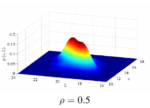Passalacqua Research
Passalacqua Research




- National Science Foundation, Investigation of the lift and virtual mass force in gas-liquid flows with particle-resolved direct numerical simulation, September 2014 – August 2017, Role: PI.
- American Chemical Society – Petroleum Research Fund – Doctoral New Investigator Award, A fundamental investigation of turbulence in multiphase gas-particle flows, September 2014 – August 2016, Role: PI.
- US Department of Energy, Uncertainty quantification tools for multiphase gas-solid flow simulations using MFIX, October 2011 – September 2014, Role: Postdoctoral research associate (2011, 2012, 2013), Co-PI (2013, 2014).
